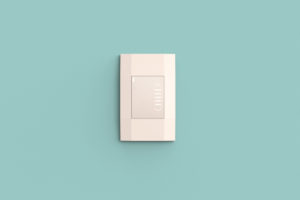
Capacitive switches have become a popular alternative to traditional mechanical switches. Also known as capacitance switches, they leverage an electrostatic field to open and close a circuit. Capacitive switches don’t have moving parts. Rather, they are a type of touch switch that, like other touch switches, operates on contact. Touching a capacitive switch will open or close its circuit. This post explores the main parts of a typical capacitive switch.
Graphic Overlay
The graphic overlay is the top layer of a capacitive switch. It’s the outermost layer, and it supports graphics or texturing. The graphic overlay can be made of different materials. Some capacitive switches have a plastic overlay, whereas others have an acrylic or glass overlay. Regardless, all capacitive switches have a graphic overlay, which is simply the top layer.
Circuit
Another important part of a capacitive switch is the circuit. Circuits, of course, are electrical components consisting of conductive paths. Touching a capacitive switch will open or close the circuit. An open circuit means that the conductive paths will be blocked. A closed circuit, on the other hand, means that the conductive paths will be complete.
For capacitive switches, the circuit may consist of either a Flexible Printed Circuit (FPC) or a Printed Circuit Board (PCB). FPCs are distinguished from PCBs by their flexible properties. They can bend and flex without breaking. The same can’t be said for PCBs. Nonetheless, you can find capacitive switches with either an FPC or a PCB.
Backer
Capacitive switches also have a backer. The backer lives up to its namesake. It’s the back panel that’s installed behind the circuit. Capacitive switches have a graphic overlay on top, followed by the circuit and then the backer. The backer is the back panel, which completed the capacitive switch.
Depending on how it’s constructed, the backer may feature an adhesive. Adhesives are sometimes used to bond the backer to the capacitive switch’s substrate. Other types of capacitive switches are constructed of backers without adhesive.
Backlighting
While optional, many capacitive switches feature backlighting. Backlighting is typically installed between the graphic overlay and the backer. It’s used to illuminate the graphic overlay so that it’s easier to see in dark and low-light environments.
Backlighting options for capacitive switches include light-emitting diode (LED), electroluminescent (EL), fiber optic and light guides. In some capacitive switches, multiple backlighting options are used. LED, for example, can be used with fiber optic or light guides. Fiber optic and light guides will distribute the light produced by the LED backlighting to achieve a more uniform level of brightness.
